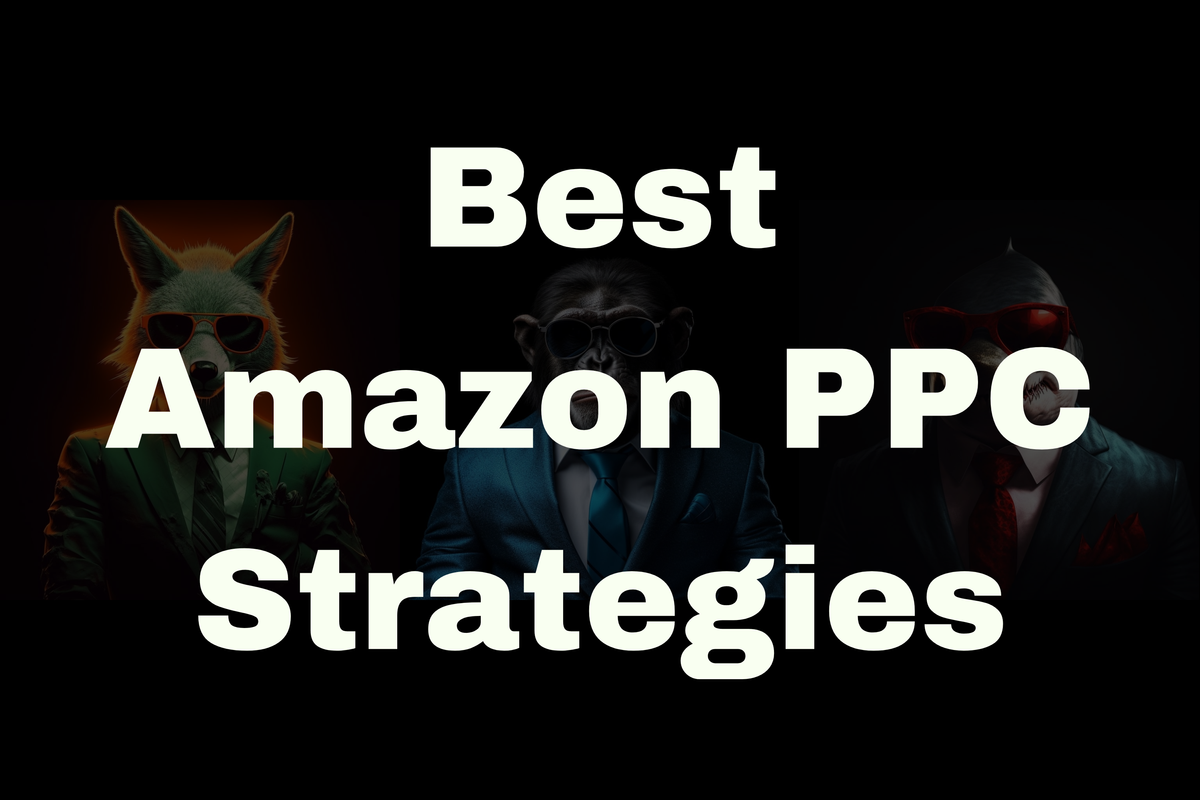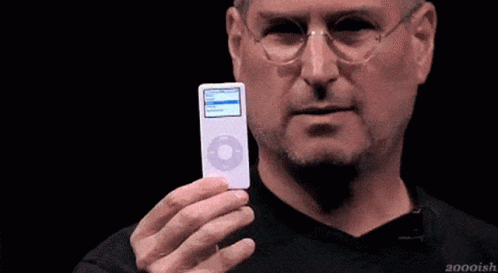The Best Amazon PPC Strategy 2024

Amazon Ads evolve a lot. The PPC strategies that worked 2 years ago might not be relevant today. As more sellers are aware of the importance of Amazon Ads, it gets more and more difficult to run profitable ads that drive profit growth.
As the founder of PPCAssist, a tool to help sellers grow their profits through ads, I regularly talk with tens of experts and hundreds of sellers. We do consulting and ad management to stay on the battlefield.
Based on that, here is the best Amazon PPC Strategy to lower your ACOS and grow your revenue in 2024!
⚠️ Before following your profitable PPC strategy, make sure you are not making one of these 3 mistakes.
One best strategy?
If you search for the best Amazon Ads strategy on Google and Youtube you might find a lot of articles and videos talking about THE best strategy.
Let's just be real: There is NO single best strategy.
Based on our experience in the field, the best strategy to apply depends on the seller:
- What is your current TACOS and its evolution?
If you are not familiar with TACOS, you better read this article and come back here, before TACOS kills your business... 👀 - What budget are you monthly willing to invest?
You will not have the same strategy with a $200 than a $2000 ad budget - How is your competition?
You will not behave the same if you are in a little niche with little competition as if you sell phone cases. - Seasonality.
If you are selling a product with seasonality, a strategy that works well in a certain period might not work at all for the same product in a different period.
That said, let's dive into the 2 best Amazon PPC strategies adapted to your business.
I will first start by explaining what they have in common, then explain to you in detail which strategy is adapted to which situation.
Grab a tea or coffee and let's go!
Target and adjust fire 🔫🔥

All PPC strategies have two types of actions:
- 🎯 Targeting: Which keywords and products do you target?
- 🤑 Bids: How much are you willing to pay for each click on these targets, and when and how do you adjust your bids?
As said before, the best strategy differs according to your situation.
Here are the 3 best strategies adapted to these 3 situations.
🦊 Losing money on ads? Follow the Calm Fox strategy

If you are losing money on Amazon PPC, this strategy is the best for you.
By losing money I mean spending all or more of your profit margin on ads. Let's take that example:
You are selling a rubber yoga mat for $100.
It costs you $20 to manufacture, inspect, and ship to Amazon.
You then have 20% taxes and let's say 30% Amazon commission, storage, and FBA fees.
Your margin pre-ads is $100-20-20-30 =30%
If your TACOS is close to or higher than 30% 👉 You must apply this strategy.
🎯 Targeting
Stop non-converting targets & search terms
You need to stop all non-converting targets that cost you money.
Take a look at your last 30 days' ad metrics and stop all exact keywords and product targets that had more than 5 clicks without making any sales. "5" is not a magic number, you may adjust that according to your store. Some sellers with very high bids spend a lot with just 3 clicks, others prefer to wait 15 clicks without sale before stopping a target.
Either way, to stop wasting money on ads, start by stopping what doesn't convert at all.
⚠️ Don't forget to also negate non-converting search terms. If you have some auto campaigns, or category / similar products / broad / phrase targeting, you need to check their search terms to see which ones are costing money without converting.
Follow the same process but instead of stopping the entire target, add negative search terms.
Drastically lower bids on high ACOS targets
Some targets are making sales, yet non-profitable sales.
It can be tempting to let these targets with their current bid as you get orders from there. But keep in mind that you spend more than what these orders bring you, and the goal of this strategy is to focus on what really works so you gain back your profits. Once done you will switch to another strategy more oriented toward growth.
⏸️ Wait
I know it is one of the difficult things to do on ads but you will then have to just wait.
Amazon PPC is not a science. The best experts will tell you that it is always about testing on learning. After having stopped non-converting targets and lower bids on high ACOS ones, you need to wait some days, ideally a week, without touching anything. After that week, if your TACOS is going the right way without reducing too much your revenue, you can do the other steps
Increase what works
After a week, if your TACOS is lowering, it is time to increase what works well.
This time, check your targets that generate sales and have low ACOS and gradually increase them.
Which ACOS exactly?
To calculate your low ACOS you need to know your TACOS and your sales repartition rate between organic and ad sales.
Let's consider you have 20% TACOS and you're making 80% of your sales through ads, 20% organically.
Any target with an ACOS lower than [TACOS * Ad sales percentage] impacts your TACOS negatively. In this case [20% * 80% = 16%]
It is important to increase these bids gradually. Increase some keywords by 10 to 20% and wait for a few days to know if you need to keep increasing them.
Increase bids on non-clicking targets
The last step of the targeting phase, gradually increase the bids of your targets that get impressions but not clicks.
💡If you have too many targets per campaign, some targets might not get any impression as the targets with the most search volume might use all the budget. In this case, split those campaigns into multiple ones.
🤑 Bids
Now that you've managed your targets and search terms, here are the bidding rules of this strategy to stop losing money and reach profitability.
- Decrease by 50% the bids of all targets that had an ACOS greater than 40% during the last 14 days
- Decrease by 30% the bids of the ones that had an ACOS between 40 and 50%
- ACOS between 30 to 40% => Decrease bid by 20%
- ACOS between 15 to 30% => Decrease bid by 10%
- ACOS between 5 to 15% => Increase bid by 10%
- ACOS lower than 5% => Increase bid by 30%
With these rules, you aggressively reduce your less profitable targets and increase the ones that are the most profitable.
👨💻 Be consistent
Applying this strategy can be time-consuming, yet consistency is key. You need to keep checking your ads, the results of your actions, and apply the same rules until you get profitable enough so your profits can finance your business growth.
3 key tips to be consistent:
- Define a specific day with specific hours to apply this strategy.
It can be each Monday morning for example. That day you know you will always have to download your reports, analyze your search terms and keywords according to this strategy rules, and make the needed changes.
Make sure to choose a time slot when you can focus fully - Do not make ad adjustments outside this specific day. The goal is to avoid emotional decisions once you've already adjusted a target.
- 💡If you want an easy solution to strictly follow this strategy, in 5 days per day and without missing anything: Apply the "Calm Fox" strategy on PPCAssist (free trial).
🐵 Already profitable? This one is for you!

If you are already profitable and want a safe strategy to grow your profits without risk, the "Monkey Brand" strategy is for you!
🎯 Targeting
Finding new targets
First of all, you need to have an AUTO targeting campaign per product.
It is important to have one campaign per product and avoid mixing multiple products in a single one (check this article for more details).
Your AUTO campaign's goal is to find new keywords and competitors to target.
Each time a new search term makes a sale, you need to:
- Add it to 4 different manual campaigns.
One sponsored product (SPP) campaign with only phrase keywords (or "similar product"), another SPP with only exact keywords or exact product, same for your sponsored brand campaigns (exact and phrase).
Make sure you never mix targeting types into a single campaign. - Add negative targetings so your AUTO campaign stops appearing on the search term. You should add an exact negative targeting in your AUTO campaign but also in your PHRASE campaign.
Be consistent with that. Check your search term reports each week to avoid missing new targets. Once again, if you want the easy, non time-consuming, non-risky solution for that:
Just apply the Monkey Brand strategy on PPCAssist.
The tool will automatically analyze your search terms everyday and send you the right suggestion to target the search terms each time you get a new one.
Stop non-converting targets & search terms
Even if you are profitable, you surely have non-converting targets & search terms.
This time the goal is not to drastically stop them but to identify which ones did not convert at all over a long period and reduce their bids or stop them.
Here are the criteria we recommend for non-converting search terms & targets. Feel free to change the numbers to fit your store:
- Disable targets that spent +$8 and made 0 revenue the last 14 days.
- Negate search terms on AUTO and BRAOD campaigns that spend +$8 with no revenue the last 14 days.
- Disable targets with +$10 ad spend and ACOS higher than 60% on a 60 days period.
🤑 Bids
You need to constantly adjust your bids every 7 days following these rules.
Once again, feel free to slightly adjust the conditions to match your product and market.
- Targets making more than 5 orders with an ACOS lower than 20% (over a 7 days period) => Increase bids by 10%
- Targets with ad cost high than €10 and ACOS higher or equal to 20% (over a 14 days period) => Lower bid by 10%.
🚨 If you increase a bid, do not edit that target's bid again for 7 days. If you decrease one, don't touch it for 14 days before re-checking if it matches the conditions again.
You can apply this exact strategy in 3 clicks on PPCAssist for free (up to 28 days free trial without any credit card).
🦈 One more thing

The first strategy, Calm Fox, is perfect for reaching profitability, the second one fits when you need to grow steadily, but what about an attack strategy?
What can you do if you are launching a new product, if you are out of stock and need to regain your ranking fast, or if your TACOS is so low that you can afford to grow more aggressively?
Let me introduce to you... the Shark Attack strategy!
You can find this strategy details and apply it directly on PPCAssist.
💡 Even if you apply a strategy, you keep full control over what the tool does. PPCAssist is not a PPC automation tool that makes decisions and direct bid changes without your consent. It sends you suggestions that you can check and validate. Once you feel confident with certain rule, you can decide to semi-automate the suggestion to validate them automatically 12 hours after being notified.
